Horses are naturally habituated with feeding grass. An average horse can live on only grass or pasture without supplementing concentrates. A good pasture with a balanced combination of different types of horse grass can supply balanced nutrition for adequate growth, development, performance, and reproduction. The successful equine breeding or training farm operations and horse rearing mainly depend on the adequate and uninterrupted supply of green fodder round the year.
What Type of Grass Do Horses Need?
Horses are single stomach animals. Their stomach is small, and the large intestine is enormous. The horses need small quantities of food frequently due to their small-sized stomach. The large intestine is responsible for the digestion and absorption of the bulk of their food in the large intestine. The horse grass should be soft, tender, easily digestible, palatable, and of high nutritional value. The horse’s maximum nutrient requirement can be met from the quantity of fodder can consume by the horse.
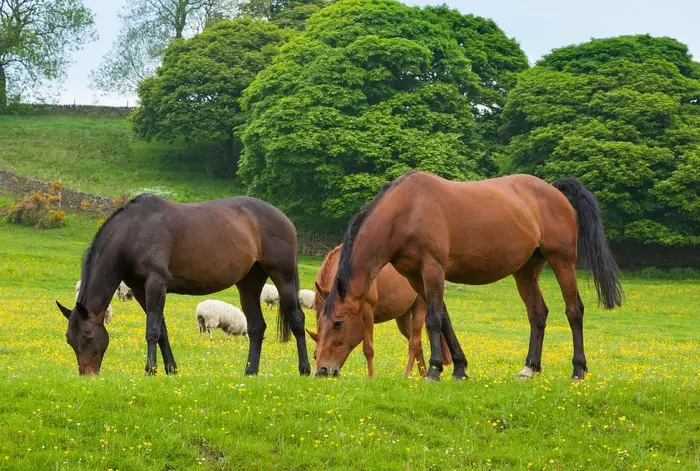
The necessity of Grass for Horses
High-quality grass is essential for a horse diet. The horses are herbivorous animals, and they need high fiber in their diet than starch or energy to maintain their health. This can be provided by supplying quality horse grass with their daily ration. High-quality pasture grass is the best food for horses with everyday work. The horses kept confined to stable should be allowed to grass on pasture. The pasture feeding will enhance palatability and exercise.
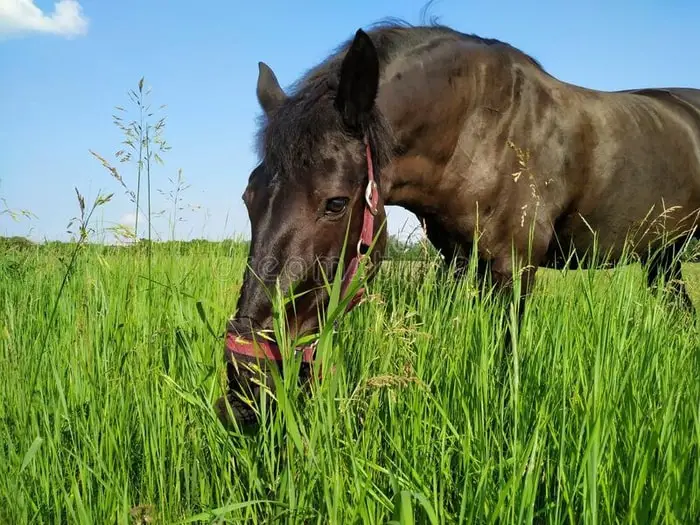
The Digestion of Grass in Horse Digestive System
Horses need at least 2% of fiber of their total body weight. The horse grasp grasses by lips and incisor teeth; mastication by molar teeth and engulfed by the esophagus in the stomach. The grass is mainly digested in the large intestine. The microbial digestion of grass started in the large intestine in the cecum and colon.
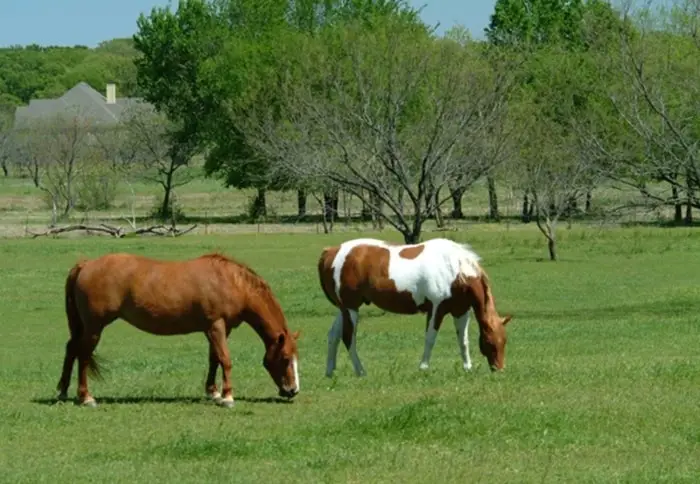
Types of Horse Grass
Horse grass is mainly two types based on the season of the year; winter grass and summer grass. The grass can be classified as a pasture grass, seasonal grass, long grass, short grass, medium grass, legumes, etc. The winter grasses are rich in protein, have less moisture, and are highly nutritious. The summer grasses use water and have less protein. They produce most of the forages as they use most of the soil nutrients.
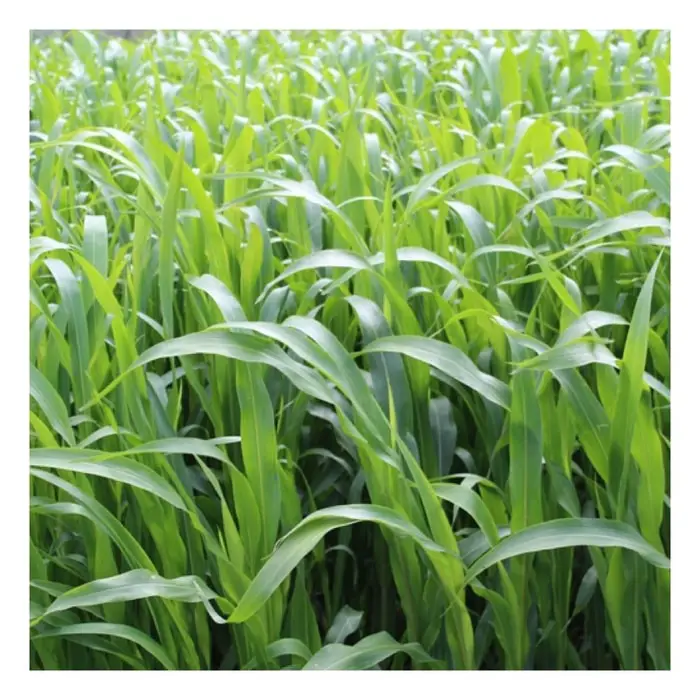
Most Common Horse Grass Species
1. Horse Grass: Maize (Zea mays)
Maize is the most common and highly palatable fodder for horses. Maize can be grown in winter, summer, early winter, and even throughout the years. The fodder can be grown by 60-70 days after sowing. The crude protein content of maize is 8-10% and is the maintenance-type crop. The food value of maize as fodder is greatly enhanced by mixed cropping with legumes like cowpeas.
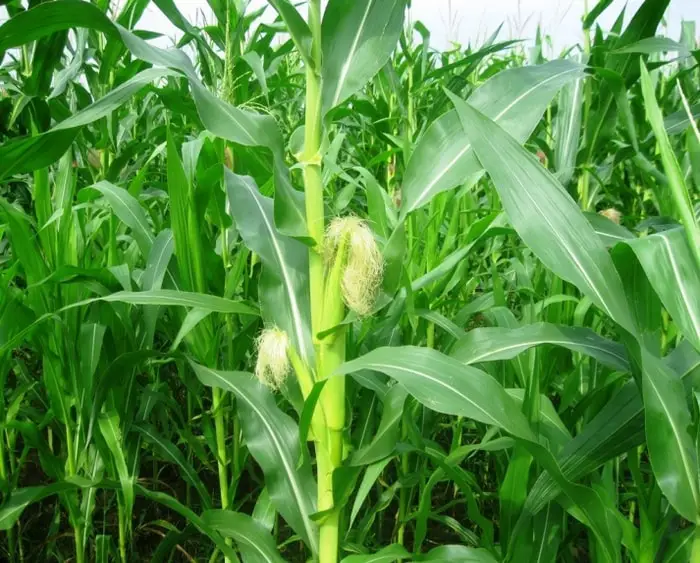
2. Oats (Avena sativa)
Fodder is highly nutritious and rich in crude protein, fiber, and energy. Fodder can be harvested in different stages of growth. The nutritional value of fodder depends on the stages of growth. The highest nutritional value is obtained during the early flowering stage of growth. The oats are the most important cereal fodder crops of winter or rabi season. You can feed oats to your horse as fodder, hay, silage, or haylage. The crude protein content of this horse grass is around 7-8% and can be increased up to 11% by adding nitrogenous fertilizer.
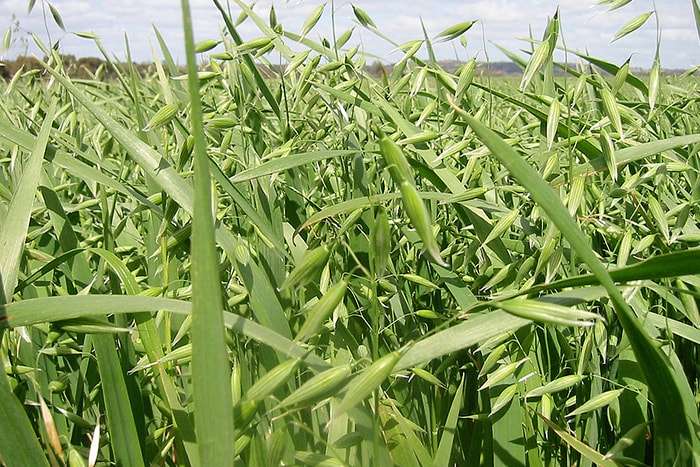
3. Berseem (Trifolium alexandrium)
Berseem is a highly nutritious leguminous fodder grass for horses. The fodder is a winter season grass. The berseem fodder is considered the king of all fodder crops. Berseem is sowed in September and can get the first cut after 55 days. The berseem fodder can be further cut after every 30 days up to May. The nutritional value of berseem is very lucrative, containing 17% CP, 26% crude fiber, and 60-65% digestible energy.
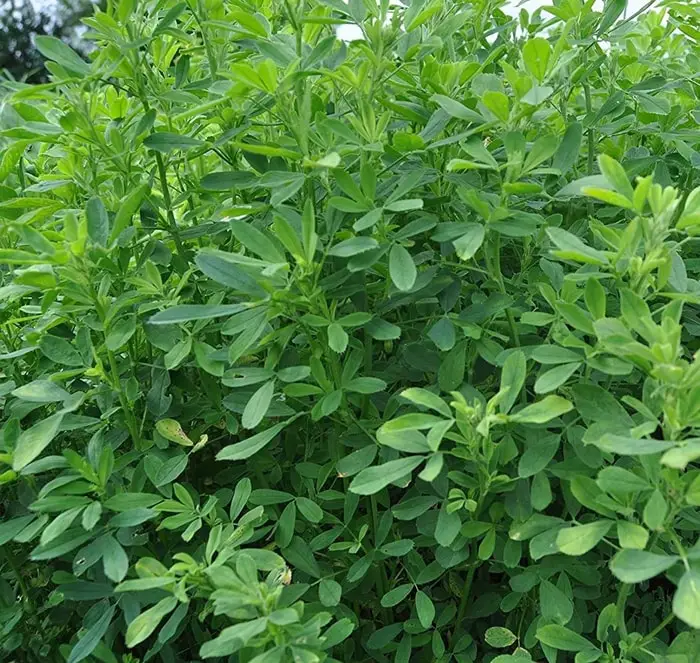
4. Horse Grass: Lucerne or Alfalfa (Medicago sativa)
Lucerne or alfalfa is one of the most common legume forage for horses. The grass is perennial and found throughout the world. The horse grass can be well set as grazing pasture, haymaking, silage making, green manure, and cover crops with oats. The fodder contains around 15% crude protein.
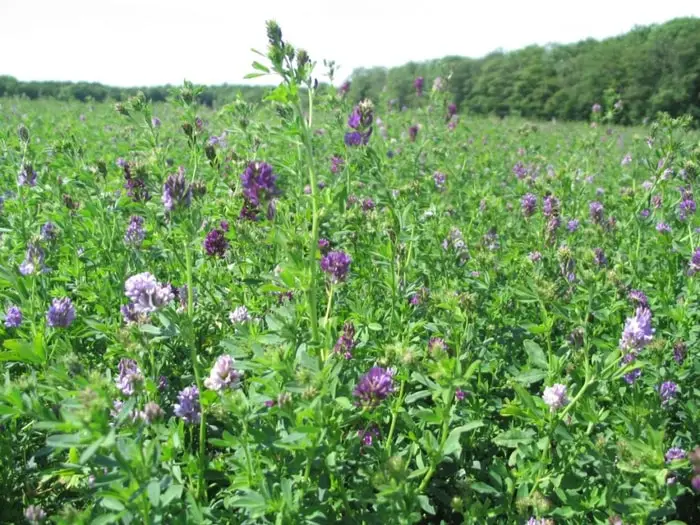
5. Sorghum (Andropogon sorghum)
Sorghum is an important, nutritious, and palatable fodder crop that can be fed as grees grass, hay, or silage to horses. There are mainly two varieties of sorghum; single cut and multiple cut. The seeds should be sown with a drill in rows about 2-5 cm deep. You can sow in between the lines legumes like cowpea, alfalfa, or both. After each cutting, you can sow legumes in-between. The fodder contains 4-5% crude protein.
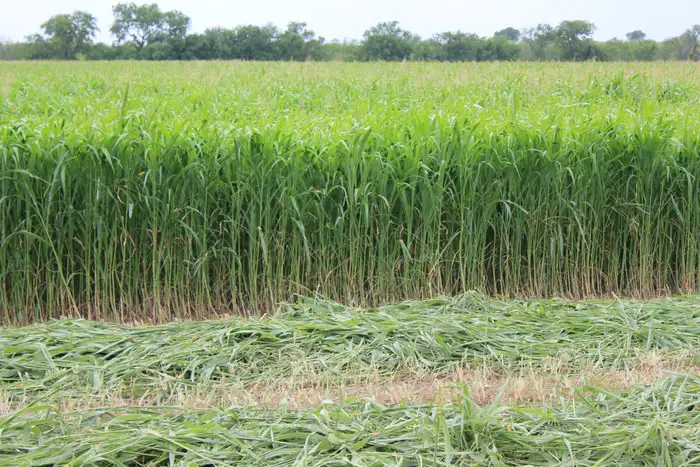
6. Pearl Millet (Pennisetum americanum)
Pearl millet or Bajra is the highest yielding fodder crop amongst the summer crops. The fodder is leafy, succulent, and has satisfactory proteins. Bajra grows very fast and can attain maturity than many other fodder crops. The fodder crops do not contain any hydrogen cyanide (HCN); that’s why it is very safe for animals. The fodder crop can be mixed cultivated with legumes and cowpea.
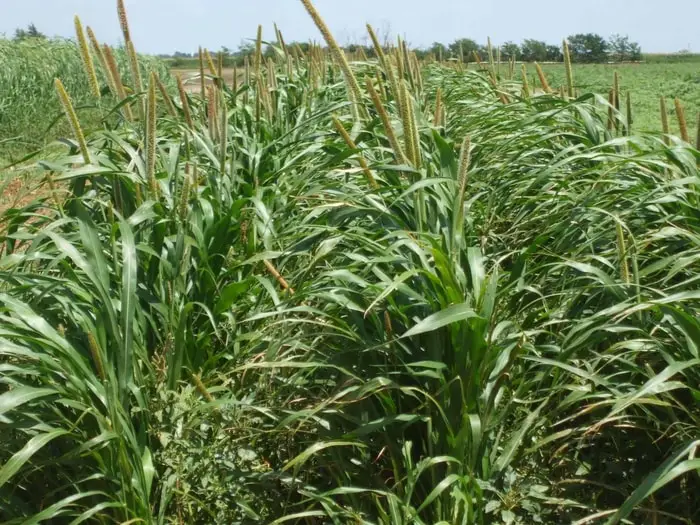
7. Giant Napier (Pennisetum purpureum)
Giant Napier or elephant grass is fodder with tremendous growth potential. The Napier grass can be cultivated throughout the year and has multi-cut. The grass is mainly of summer fodder, and yield is comparatively low in winter. The grass is suitable for silage making, while it is abundant in yield in summer.
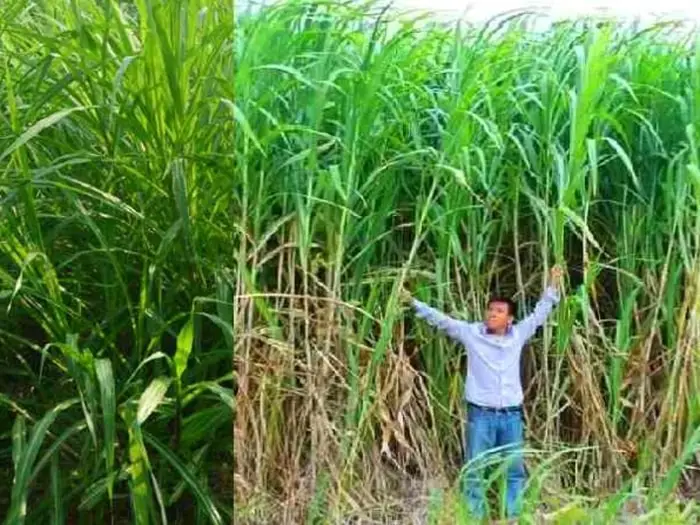
8. Para Grass (Brachiaria mutica)
Brachiaria mutica, commonly known as para grass, is a perennial, multi-cut, soft-stemmed fodder for horses. Para grass contains 11%vcrude protein and 23% crude fiber. The fodder can be grown in low drainage areas.
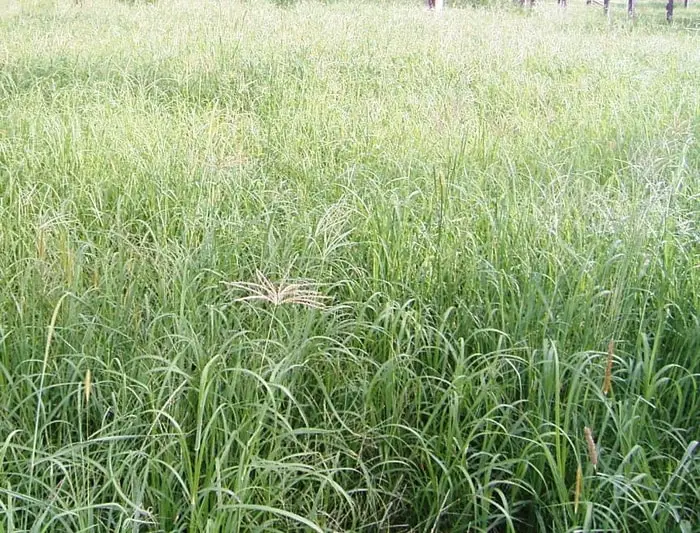
9. Teosinte ( Euchlaena maxicana)
Teosinte is a common succulent fodder crop with excellent yield. The average height of the grass is 6-7n feet. Teosinte is a multi-cut hardy crop with fair resistance to pests and diseases, stress, and excess soil moisture. The country of origin of this horse grass is central American country, Mexico.
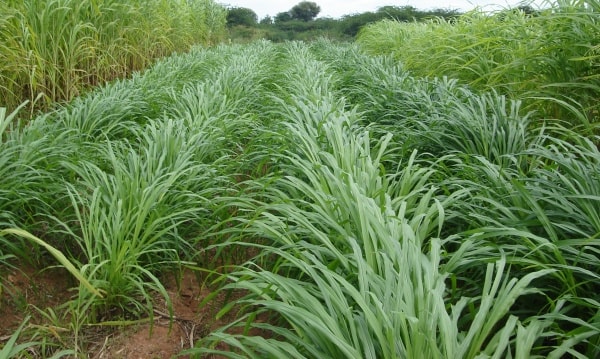
10. Cowpea (Vigna ungiculata)
Cowpea is a quick-growing leguminous forage crop suitable for horses and other domestic animals. Cowpea is suitable for fodder, hay, silage, and cover crops. The fodder can be quickly grown mixed with other fodders like maize, teosinte, Napier, and other cash crops. The cowpea is also an excellent clover crop that suppresses the growth of the weed and adds nutrients to the soil.
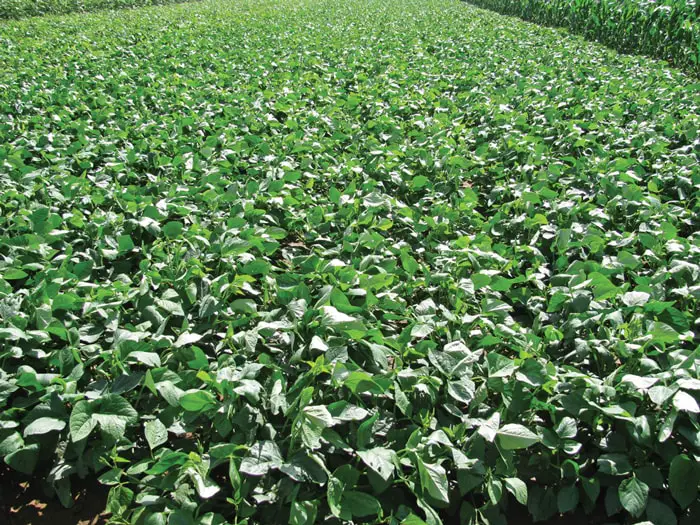
Concluding Remarks on Horse Grass
Horses mainly live on the grass in pastures. If the horses’ pasture has different categories of horse grass that supply balanced nutrition is sufficient for the daily maintenance of your horse. I have discussed the most common horse grass in my article with a short description. You can cultivate different varieties of horse grass in consultation with an equine nutritionist. My article will help you select the right and economic grass species for your valuable horses.